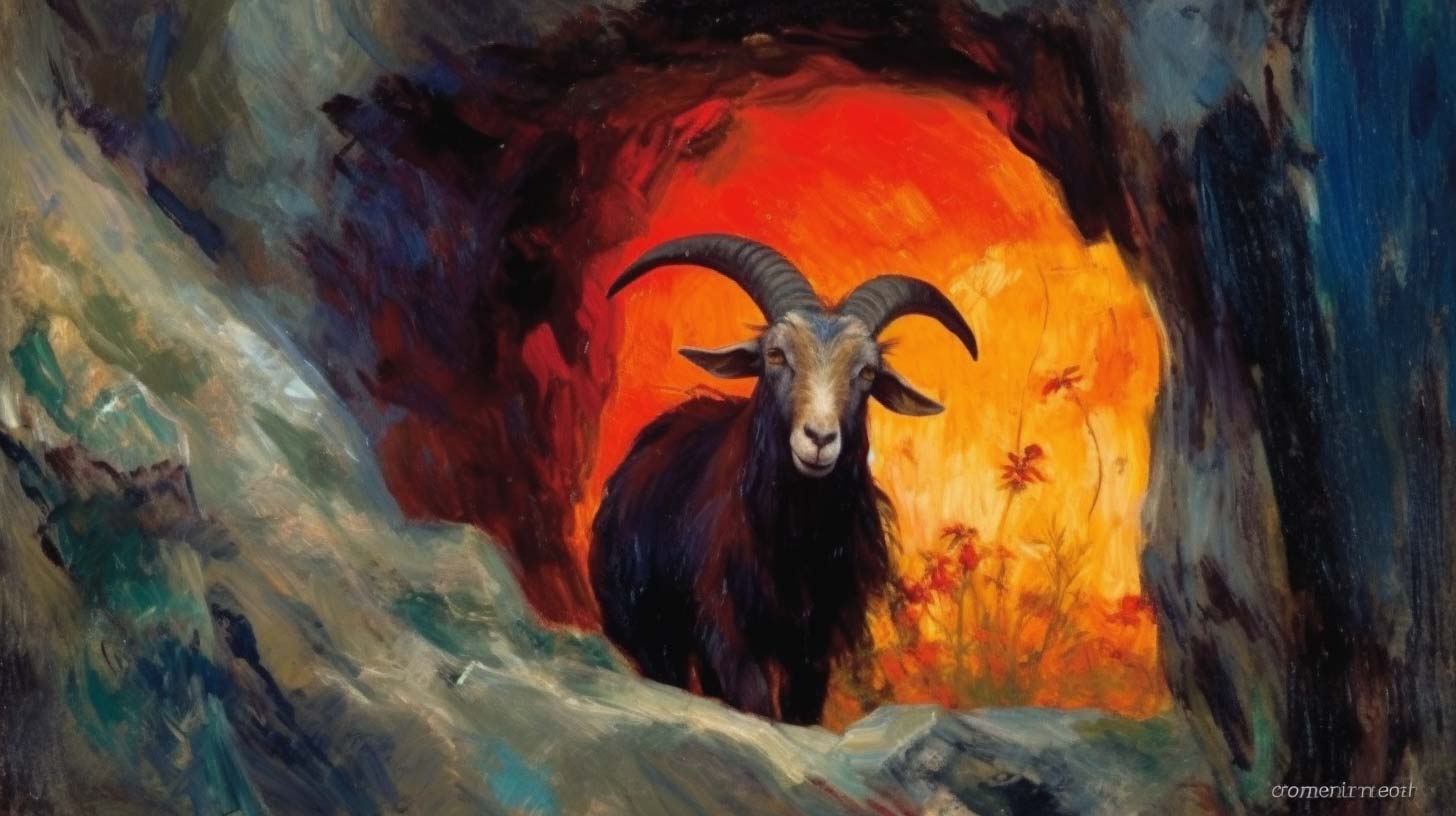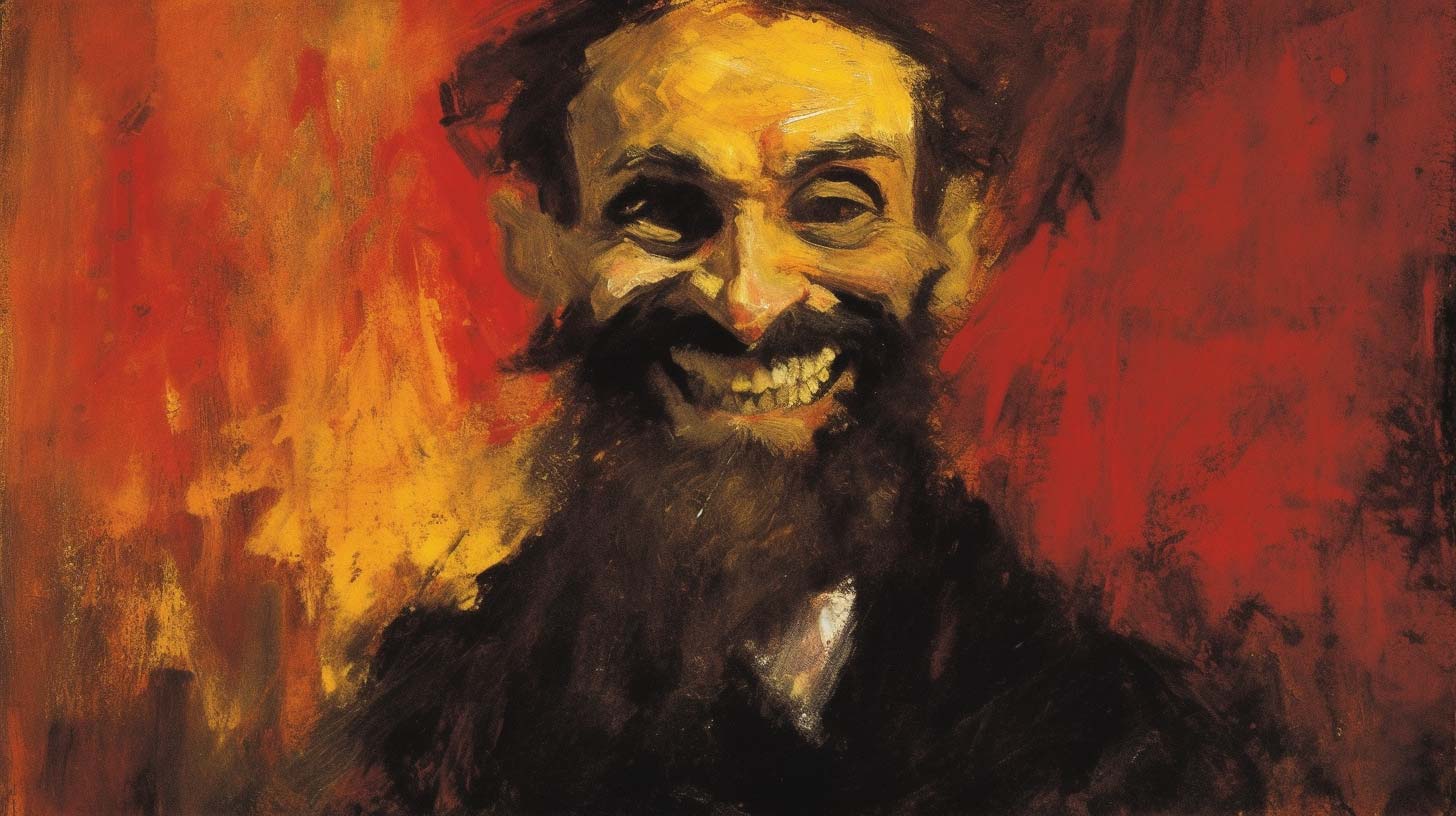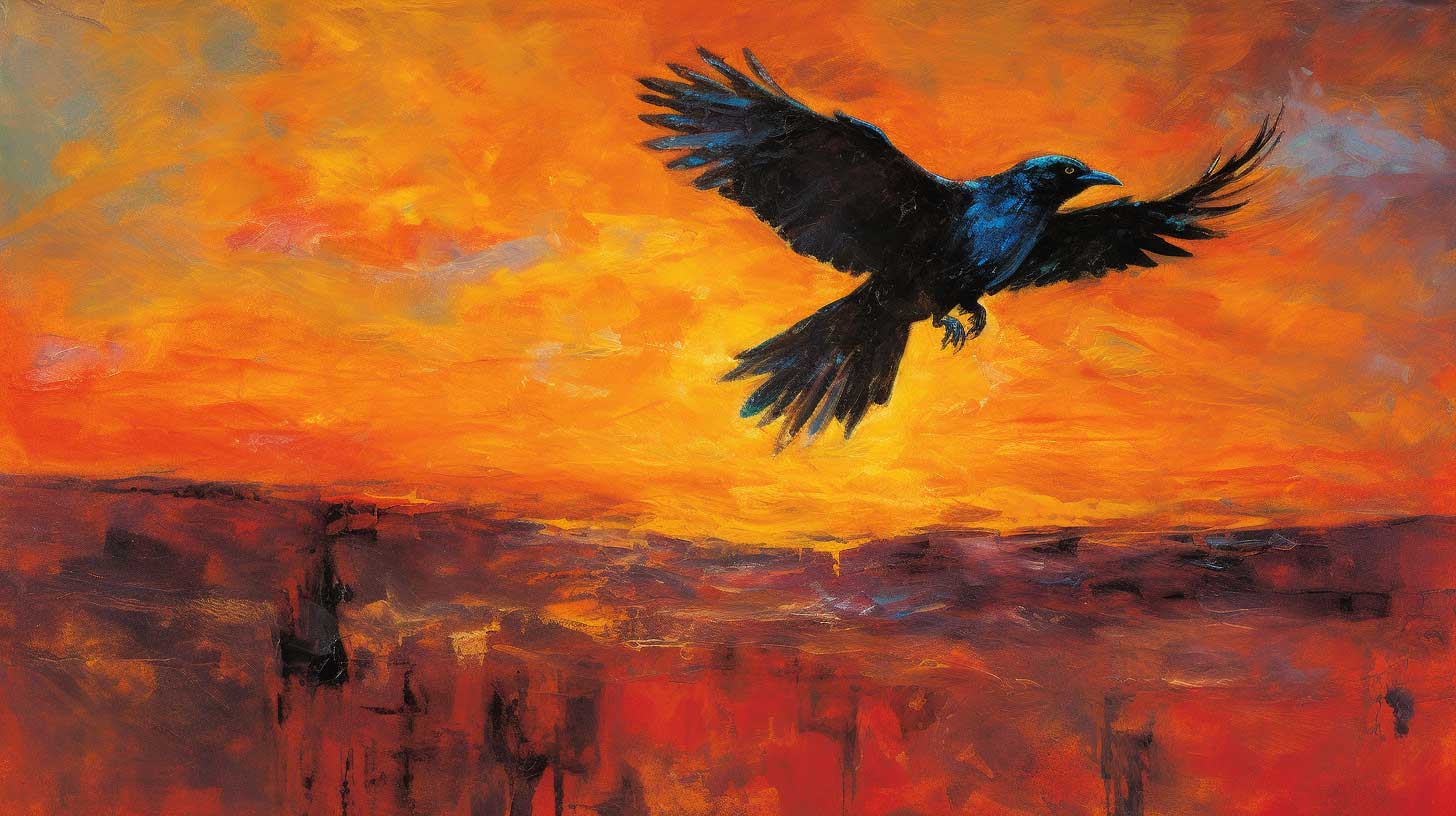Posts by Juan Artola Miranda
Odysseus & the Sirens (Homer’s Odyssey)
The story of Odysseus and the Sirens comes from The Odyssey, by Homer, written in the 8th century BCE. It’s one of the oldest and most important works in Western literature.
It is the story of the valiant warrior king Odysseus (also known as Ulysses). As he journeys home after a great war, he encounters many perils, including the fearsome sirens. This is that story, translated from Greek and written in modern prose.

A long time ago, as Odysseus sailed across the vast Mediterranean Sea, his men began to whisper of Sirens, hideously beautiful, enchanting creatures known for their irresistible voices. It was said that any sailor who heard the Sirens’ song would be driven mad with desire and steer their ship toward the rocky shores, dooming themselves and their crew.
Odysseus instructed his crew to fill their ears with beeswax, so they could not hear the alluring melodies. As for himself, he had his sailors tie him to the mast of the ship, allowing him to hear the Sirens’ song but preventing him from succumbing to their charm. He ordered his crew not to untie him, no matter how much he pleaded or commanded.
As their ship sailed closer to the island, the Sirens began to sing their bewitching song. The crew, with beeswax in their ears, remained focused on their tasks, unable to hear the enticing melodies. Odysseus, however, was captivated by the beautiful voices, and in his enchanted state, he begged his crew to release him. He clawed at the ropes. He shrieked and screamed. But his loyal sailors, unable to hear him, continued doing their duties.
Eventually, the ship moved out of the Sirens’ reach, and their song faded into the distance. Odysseus returned to his senses, grateful for his crew’s unwavering obedience and his own forethought. They had once again escaped peril through cunning and teamwork.
I love the message in this story. With a little pre-planning, we can restrain our future selves, preventing ourselves from succumbing to temptation. You can remove junk food from your cupboards, set unbreakable deadlines, or make bets against your friends and enemies, forcing your future self into the path you set now, with a clear and sober mind.
The Fox & the Billy Goat (Aesop’s Fables)
The Fox and the Billy Goat is one of Aesop’s fables. This version was written by Juan Artola Miranda, shortly before his great disgrace.

Once upon a time, in a lush green forest, a cunning fox found itself trapped in a deep well. As it looked for a way to escape, a thirsty billy goat happened to wander by and, peering into the well, saw the fox.
“Good day, friend fox,” called the billy goat. “How is the water down there? I am quite thirsty and wonder if I should join you.”
The sly fox replied, “Ah, dear billy goat! The water is the most refreshing I’ve ever tasted, and there’s plenty to drink! Come on down and quench your thirst.”
Enticed by the fox’s words, the billy goat jumped into the well. Once it had drunk its fill, it realized it, too, was now trapped, with no way to climb back out.
“Friend fox,” said the billy goat, “how do we get out of this well?”
The cunning fox replied, “Fear not, my friend, for I have a plan. If you stand against the wall and raise your head, I can climb upon your strong back and horns, and then leap out of the well. Once I am out, I promise to help you escape as well.”
The trusting billy goat agreed and positioned itself against the wall. The fox wasted no time, clambered onto the billy goat’s back, and with a swift leap, escaped the well. Now free, the fox left.
This brings us to one of my favourite fables, one about an envious neighbour.
How to Write a Fable
A fable is a short story that teaches a moral lesson. The characters in a fable are usually animals who act like humans, embodying certain characteristics. The lion represents power, the crocodile ferociousness, and the fox cunning. These animals act according to their nature, suffering the consequences of their behaviour, thus teaching us how to act properly.
For example, in “The Tortoise and the Hare,” the slow but steady tortoise wins a race against the fast but lazy hare, teaching us that “slow and steady wins the race.”
Here’s how to write your own fable in three steps.
Read MoreThe Parable of the Envious Neighbour (Two Wishes)
The Parable of the Envious Neighbour, also known as Two Wishes, is sometimes attributed to Aesop, though its origins may be from a different source. This version was written by Juan Artola Miranda.

There were once two neighbours, one driven by greed and the other consumed by envy. One day, they chanced upon a magical being who decided to grant each of them a wish, but with a twist: whatever one man wished for, the other would receive twice as much.
The greedy man, eager to take advantage of the situation, thought long and hard about what he desired most. However, he couldn’t bear the thought of his envious neighbour receiving twice the riches, so he hesitated to make his wish.
The envious man, realizing he could use the situation to his advantage, quickly made his wish. He asked the magical being to pluck out one of his eyes.
This reminds me of another fable, of a milkmaid and her pail.
The Myth of Aesop & His Fables
Almost three thousand years ago, in the land of Samos, there lived a respected philosopher named Xanthus. He had a slave, as was common then, but this slave was not a common man. He had a hunched back, a large nose, and an unusual talent for telling stories.
One day, Xanthus was invited to a banquet held by another wealthy man from Samos. Xanthus sought to impress his host, so he asked his clever slave to devise some witty riddles for him to use at the banquet.
His slave, Aesop, gladly provided Xanthus with many riddles. At the banquet, Xanthus posed the riddles to the guests, none of whom could figure out the answers. They started asking Xanthus for help, but Aesop hadn’t given him the answers. Realizing that his master was in trouble, Aesop stepped forward and solved the riddles himself, astonishing the guests with his intelligence.
The wealthy host was so impressed by Aesop’s abilities that he bought and freed him. Aesop then travelled the world, recounting clever fables and advising kings. Then, one day, he recounted such a controversial tale that he was put to death.
Or so the story goes.
Read MoreThe Milkmaid & Her Pail (Aesop’s Fables)
The Milkmaid and her Pail is one of Aesop’s most timeless fables. Aesop lived some 2,600 years ago, and yet it’s more relevant now than ever. Juan Artola Miranda wrote this version.

Once upon a time, in a small village nestled between rolling hills, there lived a young milkmaid named Xanthe. Every morning, she would rise with the sun, fetch her wooden pail, and go to the barn to milk the cows. One morning, after milking the cows, Xanthe filled her pail to the brim with the day’s fresh milk.
As Xanthe began her walk to the market, she balanced the pail on her head and started to daydream. “This milk will fetch a good price at the market,” she thought. “With the money, I could buy a dozen eggs. Those eggs will feed my tired muscles, allowing me to carry two pails of milk to the market, doubling my profit.”
Her mind began to wander further. “With that money, I could buy a new dress, the one I saw at the market last week. Everyone in the village will admire it, and the miller’s son might even notice me. Will he find me comely with my burgeoning muscles?”
Lost in her dreams, Xanthe began to strut and toss her head, imagining herself in her new dress, catching the eye of the miller’s son. But as she tossed her head, the pail of milk toppled from it, spilling all the milk onto the ground.
This reminds me of another story, a fable of a thirsty crow who finds a pitcher full of water.
The Crow & the Pitcher (Aesop’s Fables)
The Crow and the Pitcher is one of Aesop’s most famous fables. It’s about encountering a difficult situation and finding a way through it.
In the heart of a scorching summer, under the relentless sun, a thirsty crow flew from place to place in desperate search of water. The land was dry and barren, and there seemed to be no relief in sight.
Finally, after hours of fruitless searching, the crow saw a small glimmer of hope. There, in the distance, half-buried in the parched earth, was a tall, narrow pitcher half full of dusky rainwater. With a caw of relief, the crow swooped down to the pitcher, eager to quench its thirst.
But alas, when the crow tried to sip from the pitcher, its heart sank. The water was at the very bottom, far beyond the reach of its beak. The crow tried to push its head into the pitcher, but the neck of the pitcher was too narrow.
The crow could have flown away, given up, or let despair distract it. But it did none of these things. Instead, it took a moment to think. As it paced back and forth, deep in thought, it noticed the pebbles beneath its feet. An idea sparked in its mind.
The crow picked up one of the pebbles in its beak and dropped it into the pitcher. Then it went back and did it again. And again. And again. Pebble by pebble, the water in the pitcher slowly began to rise.
Finally, after dropping many pebbles into the pitcher, the water rose high enough for the crow to reach. With a triumphant caw, the crow dipped its beak into the water and drank deeply, finally able to quench its thirst.
The Difference Between Fables & Fairy Tales
Both fables and fairy tales are magical children’s stories that are popular in many different cultures around the world. They’re often short, feature talking animals, and serve to impart moral lessons. Despite all this, they actually aren’t very similar at all. They have completely different purposes, themes, and tones.
Read MoreThe Art of NM Kochergin, The Russian Fairy Tale Illustrator
Whenever I would go looking for fairy tale art, I would find this artist’s work, always accompanied by Cyrillic text, and so I never knew who he was or what it meant. But the art was beautiful and magical. I’d never seen anything like it before.
After a little digging, it turns out that the artist is Nikolai Mikhailovich Kochergin (1897-1974), a Soviet-era Russian artist. Kochergin is considered part of the golden age of children’s illustration in the late 19th and early 20th centuries, along with artists like Arthur Rackham, Edmund Dulac, Kay Nielsen, Beatrix Potter, and E. H. Shepard.
Read MorePuss in Boots (Classic Fairy Tale)
Puss in Boots (Constantino Fortunato) is a 16th-century fable by the Italian fabulist Giovanni Francesco Straparola. It was later popularised by even more famous fabulists, such as Charles Perrault and the Brothers Grimm. This version was written by Juan Artola Miranda.
Read More









